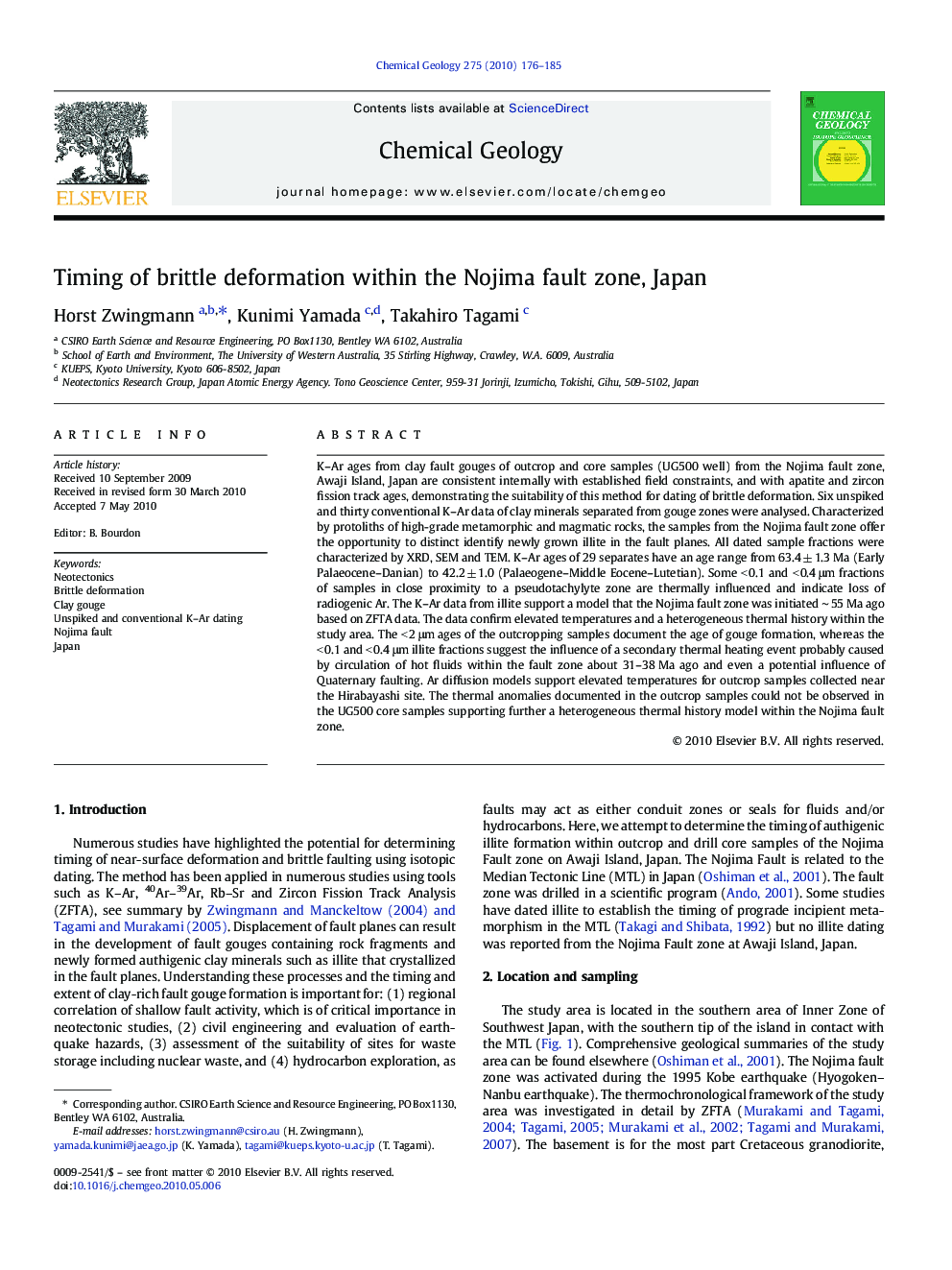| Article ID | Journal | Published Year | Pages | File Type |
|---|---|---|---|---|
| 6437045 | Chemical Geology | 2010 | 10 Pages |
K-Ar ages from clay fault gouges of outcrop and core samples (UG500 well) from the Nojima fault zone, Awaji Island, Japan are consistent internally with established field constraints, and with apatite and zircon fission track ages, demonstrating the suitability of this method for dating of brittle deformation. Six unspiked and thirty conventional K-Ar data of clay minerals separated from gouge zones were analysed. Characterized by protoliths of high-grade metamorphic and magmatic rocks, the samples from the Nojima fault zone offer the opportunity to distinct identify newly grown illite in the fault planes. All dated sample fractions were characterized by XRD, SEM and TEM. K-Ar ages of 29 separates have an age range from 63.4 ± 1.3 Ma (Early Palaeocene-Danian) to 42.2 ± 1.0 (Palaeogene-Middle Eocene-Lutetian). Some < 0.1 and < 0.4 μm fractions of samples in close proximity to a pseudotachylyte zone are thermally influenced and indicate loss of radiogenic Ar. The K-Ar data from illite support a model that the Nojima fault zone was initiated â¼Â 55 Ma ago based on ZFTA data. The data confirm elevated temperatures and a heterogeneous thermal history within the study area. The < 2 μm ages of the outcropping samples document the age of gouge formation, whereas the < 0.1 and < 0.4 μm illite fractions suggest the influence of a secondary thermal heating event probably caused by circulation of hot fluids within the fault zone about 31-38 Ma ago and even a potential influence of Quaternary faulting. Ar diffusion models support elevated temperatures for outcrop samples collected near the Hirabayashi site. The thermal anomalies documented in the outcrop samples could not be observed in the UG500 core samples supporting further a heterogeneous thermal history model within the Nojima fault zone.
